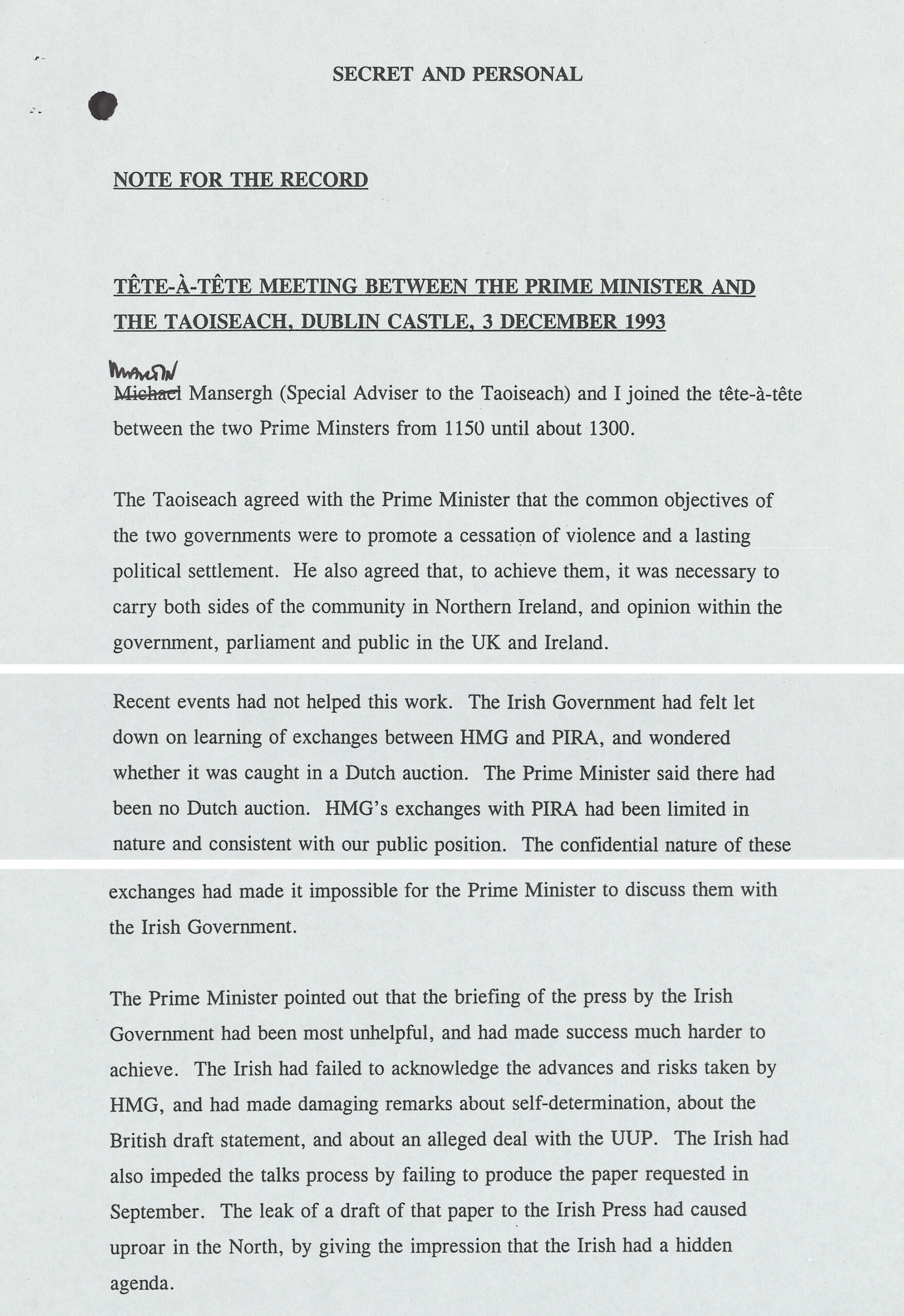
Record of a meeting between the UK Prime Minister and the Irish Taoiseach December 1993
Context notes
This meeting took place a short time before the Downing Street Declaration was issued. There was constant dialogue between Her Majesty’s Government (HMG – i.e. the British government) and the Irish Government. Sometimes, as in this case, they were tense. In this instance the Irish government discovered that HMG had been holding talks with the leaders of the PIRA. This had been carried out using go-betweens such as Catholic priests, Northern Ireland business-people and also some British Intelligence officers.
Transcript
SECRET AND PERSONAL
NOTE FOR THE RECORD
TÊTE-À-TÊTE MEETING BETWEEN THE PRIME MINISTER AND
THE TAOISEACH, DUBLIN CASTLE, 3 DECEMBER 1993
Martin Mansergh (Special Adviser to the Taoiseach) and I joined the tête-à-tête between the two Prime Minsters [sic] from 1150 until about 1300.
The Taoiseach agreed with the Prime Minister that the common objectives of the two governments were to promote a cessation of violence and a lasting political settlement. He also agreed that, to achieve them, it was necessary to carry both sides of the community in Northern Ireland, and opinion within the government, parliament and public in the UK and Ireland.
The Prime Minister and the Taoiseach had been working towards these objectives since their first meeting in Downing Street soon after the Taoiseach took office – and long before people had heard of the Hume/Adams dialogue. Since June 1993, they had been working on a draft Joint Declaration originally put forward by the Taoiseach, but since amended towards a more balanced document.
Recent events had not helped this work. The Irish Government had felt let down on learning of exchanges between HMG and PIRA, and wondered whether it was caught in a Dutch auction. The Prime Minister said there had been no Dutch auction. HMG’s exchanges with PIRA had been limited in nature and consistent with our public position. The confidential nature of these exchanges had made it impossible for the Prime Minister to discuss them with the Irish Government.
The Prime Minister pointed out that the briefing of the press by the Irish Government had been most unhelpful, and had made success much harder to achieve. The Irish had failed to acknowledge the advances and risks taken by HMG, and had made damaging remarks about self-determination, about the British draft statement, and about an alleged deal with the UUP. The Irish had also impeded the talks process by failing to produce the paper requested in September. The leak of a draft of that paper to the Irish Press had caused uproar in the North, by giving the impression that the Irish had a hidden agenda.
Questions
Content
- What did the two sides agree was a priority?
- What did they agree was necessary to achieve their aims?
Inferences from the content
- What can a historian infer from this document about relations between the British and Irish governments at this time?
- What can a historian infer about the differing concerns of the two governments?
Inferences from the context
- Is it significant that the two leaders met face to face (tête-à-tête)?
